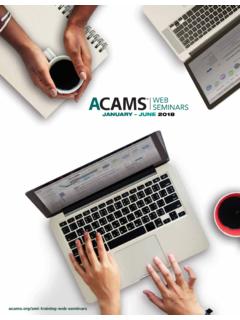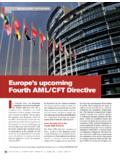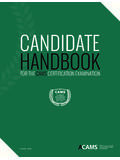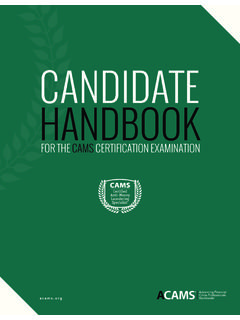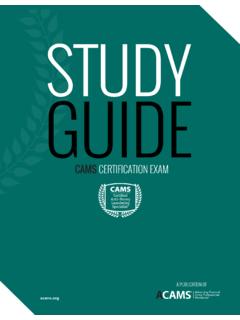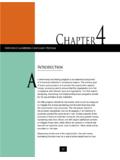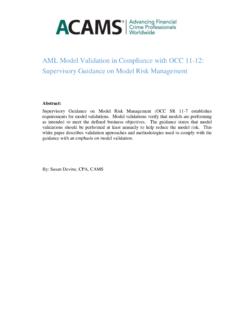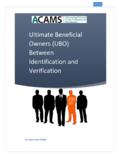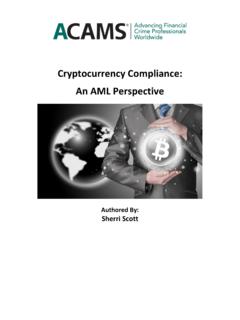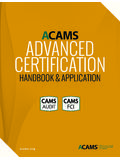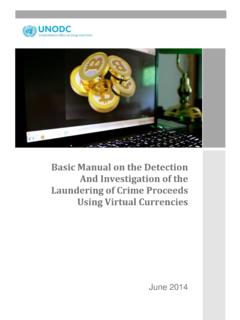Transcription of Trade-Based Money Laundering - ACAMS
1 Trade-Based Money Laundering Course Syllabus Audience The primary target is the frontline analyst, teaching skills that benefit new and experienced employees, especially as regulator and market expectations increase. This course assumes the employer has already introduced that organization's unique roles, processes, systems, and common cases, and this course will not conflict with those. To bring all learners to a shared baseline of terminology, concepts, and processes, the course starts with the Essentials video and then builds from there. The course is written and presented by subject matter experts working around the world.
2 It pulls examples from many countries, and is globally appropriate. The lessons and examples are relevant to any industry. A primary focus is financial institutions, including banks, credit unions, asset managers, insurance, MSB, securities broker-dealers, credit card issuers, alternate payment systems, etc. Course structure ACAMS allows you 4 calendar weeks to complete 4 hours of coursework, including a final assessment. You will be guided using a learning path on ACAMS ' learning management system (LMS). Follow carefully all instructions. Live virtual classroom events are pre-scheduled before you purchase the course.
3 4 weeks from the course start date your access expires. Assignment Format Download from LMS. Week 30 mins VIDEO Video: Self-paced, available anytime PDF quick reference One Essentials . Week 90 mins VIRTUAL Live event: See LMS for date/time. PDF slides Two CLASSROOM Later a recording will be on the LMS. Week 90 mins VIRTUAL Live event: See LMS for date/time. PDF slides Three CLASSROOM Later a recording will be on the LMS. Week 15 mins HOMEWORK Self-paced, available anytime PDF assignment Four Self-paced, available anytime 15 mins ONLINE PDF ACAMS certificate ASSESSMENT. To earn the certificate you must pass the assessment within the 4 weeks.
4 The assessment has 20. questions. The minimum passing score is 80%. Multiple attempts are allowed. When you pass, your ACAMS Certificate will be available in the learning path itself. Click to download a PDF. ACAMS will automatically add 4 CAMS Credits to your profile. Technical requirements The course is compatible with most operating systems and browsers to make it easy to participate. The video, homework, and final assessment are mobile-friendly. The virtual classroom uses Webex Event Center which currently does not support mobile devices. The ACAMS Learning Management System (LMS) is Contact your organization's IT department for assistance.
5 ACAMS . All rights reserved. Trade-Based Money Laundering page 1. This information is subject to change. course syllabus updated 30 MAY2017. Trade-Based Money Laundering Assess and reduce your AML risk of trade transactions. Behavioral outcomes of this course: 1. Describe the purpose, appeal, and methods of trade based Money Laundering 2. Assess the AML risk profile of proposed trade transactions 3. Integrate TBML controls with existing AML/CTF program Course content Crime 1) Describe the purpose, appeal, and methods of Trade-Based Money Laundering a) FATF, dominant Money Laundering methodologies i) Via banks ii) Bulk cash smuggling iii) Trade-Based Money Laundering b) What is TBML?
6 I) FATF defines TBML as the process of disguising the proceeds of crime and moving value through the use of trade transactions in an attempt to legitimize their illicit origins.. c) How big is the problem? i) Money Laundering verses TBML. d) Three stages of TBML. i) Placement (1) Dirty Money becomes goods ii) Layering (1) trade goods move across borders iii) Integration (1) Resale of goods e) Why here, why now? i) Tradition, been around hundreds of years ii) Government regulation iii) Low risk for criminal due to lack of scrutiny and volume of trade f) Why do we care? i) Increased government regulations ii) Why is there more regulation?
7 (a) TBML prevention = Increased government revenue g) How? i) Three Methods of TBML. (1) Falsify the price of goods (a) Invoice Manipulation (2) Falsify the quantity of goods shipped (a) Over, short, and phantom shipment of goods (3) Falsify the quality or type of goods or services (a) Falsely described goods and services ii) Why Gold? (1) Assured value worldwide (2) Very hard to trace (3) Store wealth and is easy to exchange worldwide (4) Cultural demands for gold ACAMS . All rights reserved. Trade-Based Money Laundering page 2. This information is subject to change. course syllabus updated 30 MAY2017. (5) Used in underground financial systems iii) TBML Case Studies.
8 (1) Operation Meltdown (2) Operation Polar Cap (3) Fake gold sales iv) Informal Money Transfer Systems (1) Hawala - Money transfer without Money movement (a) Reliable, easy, and cheap (b) No promissory instruments exchanged (c) based on Trust (d) No legal enforcement for debts (e) No permanent records maintained (f) Mainly immigrants sending Money home (g) Account Settlement (i) Bank-to-bank wire transfers (ii) Bulk cash (iii) Cyber currencies (iv) Trade-Based value transfer (2) Black Market Peso Exchange (a) Regional black market based on criminal international trade (b) Columbian drug cartels use to launder drug Money v) Trade-Based Fraud (1) Value added tax (VAT) fraud or carousel fraud (2) trade misinvoicing (3) Transfer pricing (4) trade diversion vi) TBML References (1) 2006 FATF Typology Report on Trade-Based Money Laundering (2) 2012 Asia Pacific Group Typology Report on Trade-Based Money Laundering (3) 2014 Federal Financial Institutions Examination Council's Bank Secrecy Act/Anti- Money Laundering Examination Manual (4) 2010 FinCEN Advisory to Financial Institutions on Filing Suspicious Activity Reports regarding Trade-Based Money Laundering Punishment 2)
9 Assess the AML risk profile of proposed trade transactions a) Evidence based Risk assessment i) Clients (1) Who/what poses a risk? (a) Foreign financial institutions (correspondent banks). (b) Non-bank financial institutions (MSBs, casinos, card clubs). (c) PEPs (i) Case study: Commerzbank (d) Cash-intensive businesses (i) Case study: New York car salesman (e) Charities (i) Case study: Paris based charity (f) Professional service providers (2) Flags (a) How the client behaves (i) Willingness to waive discrepancies (ii) Unusual confidentiality required (iii) Evasive answers (iv) Inconsistent information ACAMS .
10 All rights reserved. Trade-Based Money Laundering page 3. This information is subject to change. course syllabus updated 30 MAY2017. (v) Excessive, aggressive, or pressured contact (b) Who the client is (i) Military involvement (ii) Small and medium sized enterprises (c) Who else is involved (i) Front/shell companies (ii) Links to 3rd party organizations (iii) Located in a high-risk jurisdiction (iv) Related or belong to the same group of (v) Instructions/payment from unknown parties ii) Transaction Patterns (1) Money (a) Analyze financial information (i) Consistent with normal business activity (ii) Complex or unusual (iii) Economic sense (iv) Value of goods reported verses fair market value (v) Method of payment 1.
